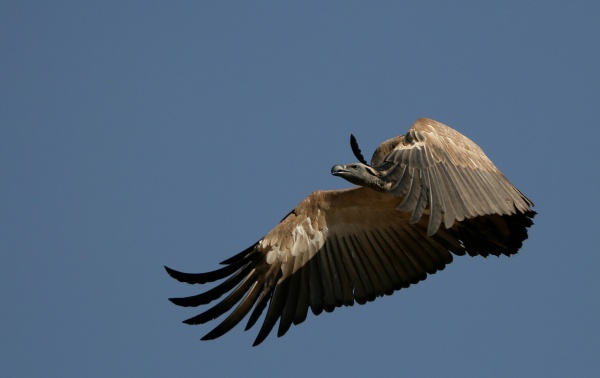Birds love to perch on wires and power poles, the bigger the bird the bigger the wire. Unfortunately this affinity poses a threat to very large birds because their long wings can touch two wires at the same time and electrocute them. Vultures are especially vulnerable because they roost in large gregarious groups. If they jostle their buddies too much … ooops!
Cape vultures (Gyps coprotheres) of southern Africa, like most Gyps species, are declining. They are listed as threatened because of decreased carrion for their chicks, poisoning from medication in livestock carcasses, electrocution and collision with wires, and exploitation for traditional medicine/religion.
Cape vultures live a long time and reproduce slowly so significant losses of any kind pose a problem. There are protected areas in southern Africa where the vultures aren’t exposed to so many threats but there is also a growing power grid.
W. Louis Phipps and his team decided to find out how cape vultures used the power grid so they affixed GPS trackers on nine cape vultures — five adults and four immatures — to see where they would go. The results were somewhat surprising.
The cape vultures’ home range is larger than expected; some traveled more than 600 miles one way. Given the opportunity to travel the power corridors, that’s what they did. Cape vultures are cliff birds so the power towers gave them high perches and clear sight lines in formerly useless habitat. The study also found that the vultures fed more often on private farmland than in protected areas. (The vultures would say, “Well, that’s where the food was.”)
It’s the classic Catch-22. The power corridors have expanded the cape vultures’ range but the wires sometimes kill them. In a declining population it makes a difference.
For more information read the full study here at PLOS One.
(photo from Wikimedia Commons. Click on the image to see the original)
